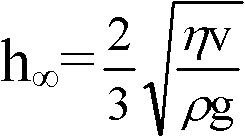Preparation method for gas separation composite membrane
A gas separation and composite membrane technology, applied in separation methods, semi-permeable membrane separation, dispersed particle separation, etc., can solve the problems of increased mass transfer resistance of the support layer, uneven coating, etc., and achieve improved permeability and separation performance Effect
- Summary
- Abstract
- Description
- Claims
- Application Information
AI Technical Summary
Problems solved by technology
Method used
Image
Examples
Embodiment 1
[0021] Dissolve 100 parts of vinylmethylsiloxane-octylmethylsiloxane-dimethylsiloxane copolymer (viscosity 400-800cSt) in 900 parts of isooctane, add 6 parts of polymethylhydrogensiloxane Oxane (viscosity 15-25cSt), 3 parts of 1,3-divinyl-1,1,3,3-tetramethyldisiloxane platinum complex, stirred at 40°C for 60min, prepared as a separation layer membrane liquid. The separation layer membrane solution was evenly coated on the PAN base film, dried at room temperature for 20 minutes, and heat-treated at 90°C for 30 minutes to prepare a composite membrane 1. Measure its O at 25°C 2 , N 2 , propylene (C 3 h 6 ) penetration and separation properties are: J N2 =0.224m 3 m -2 ·atm -1 h -1 , α(O 2 / N 2 )=2.316, α(C 3 h 6 / N 2 ) = 24.9.
Embodiment 2
[0023] Dissolve 70 parts of vinylmethylsiloxane-octylmethylsiloxane-dimethylsiloxane copolymer (viscosity 400-800cSt) in 930 parts of isooctane, add 4 parts of polymethylhydrogensiloxane Oxane (viscosity 15-25cSt), 3 parts of 1,3-divinyl-1,1,3,3-tetramethyldisiloxane platinum complex, stirred at 100°C for 10min, prepared as a separation layer membrane liquid. The separation layer membrane solution was evenly coated on the PAN base film, dried at room temperature for 10 minutes, and heat-treated at 120°C for 5 minutes to obtain a composite membrane 2. Measure its O at 25°C 2 , N 2 , propylene (C 3 h 6 ) penetration and separation properties are: J N2 =0.201m 3 m -2 ·atm -1 h -1 , α(O 2 / N 2 )=2.354, α(C 3 h 6 / N 2 ) = 25.7.
Embodiment 3
[0025] Dissolve 55 parts of vinylmethylsiloxane-octylmethylsiloxane-dimethylsiloxane copolymer (viscosity 400-800cSt) in 945 parts of isooctane, add 1 part of polymethylhydrogensiloxane Oxane (viscosity 15-25cSt), 2 parts of 1,3-divinyl-1,1,3,3-tetramethyldisiloxane platinum complex, stirred at 80°C for 30min, prepared as a separation layer membrane liquid. The separation layer membrane solution was evenly coated on the PAN base film, dried at room temperature for 10 minutes, and heat-treated at 80°C for 20 minutes to prepare a composite membrane 3. Measure its O at 25°C 2 , N 2 , propylene (C 3 h 6 ) penetration and separation properties are: J N2 =0.317m 3 m -2 ·atm -1 h -1 , α(O 2 / N 2 )=2.304, α(C 3 h 6 / N 2 ) = 24.3.
PUM
 Login to View More
Login to View More Abstract
Description
Claims
Application Information
 Login to View More
Login to View More - R&D
- Intellectual Property
- Life Sciences
- Materials
- Tech Scout
- Unparalleled Data Quality
- Higher Quality Content
- 60% Fewer Hallucinations
Browse by: Latest US Patents, China's latest patents, Technical Efficacy Thesaurus, Application Domain, Technology Topic, Popular Technical Reports.
© 2025 PatSnap. All rights reserved.Legal|Privacy policy|Modern Slavery Act Transparency Statement|Sitemap|About US| Contact US: help@patsnap.com

